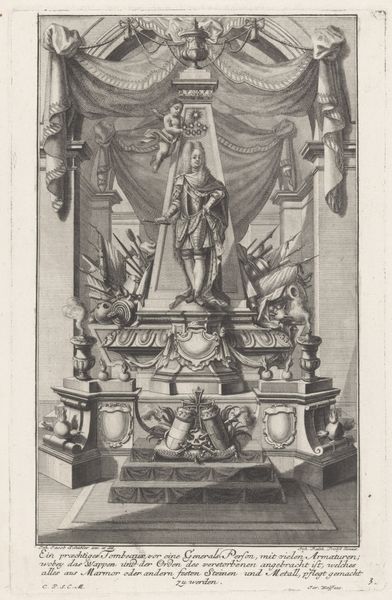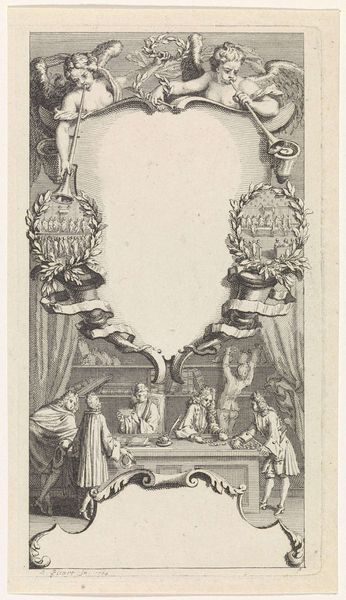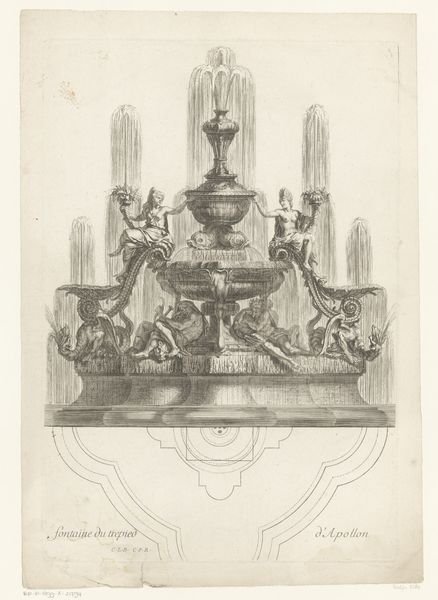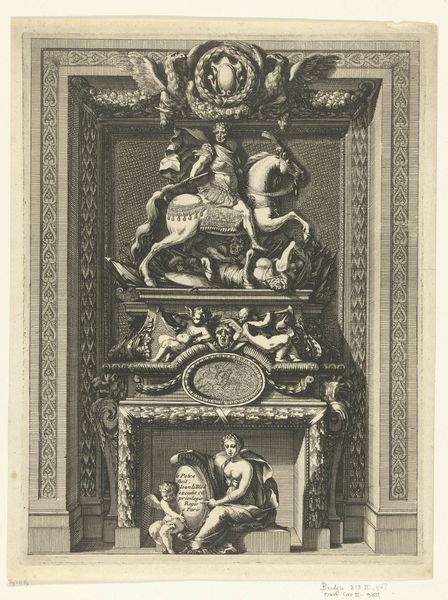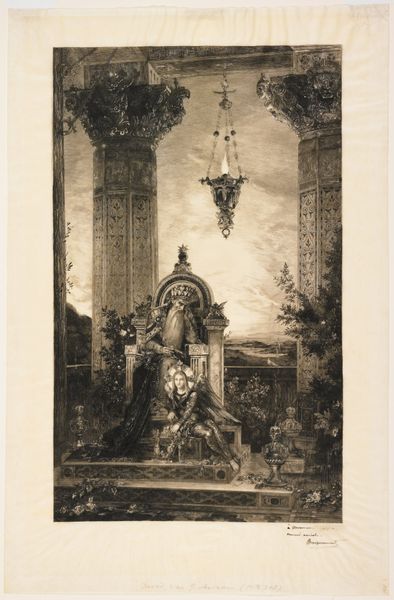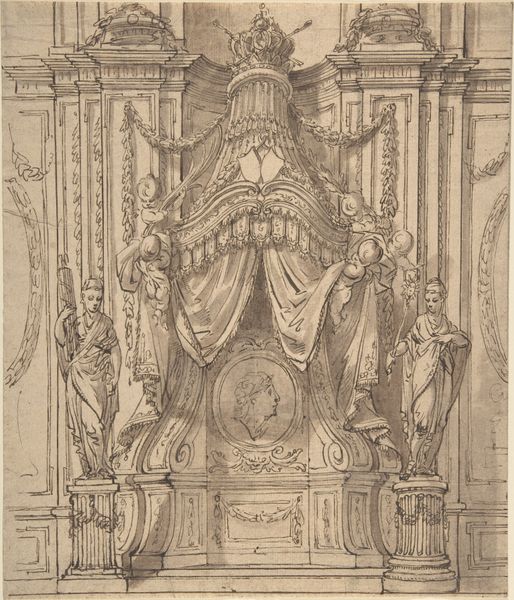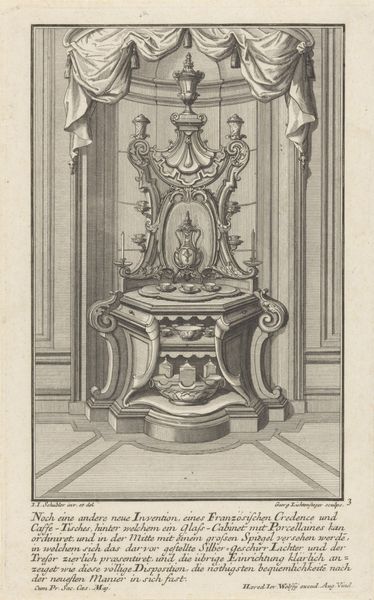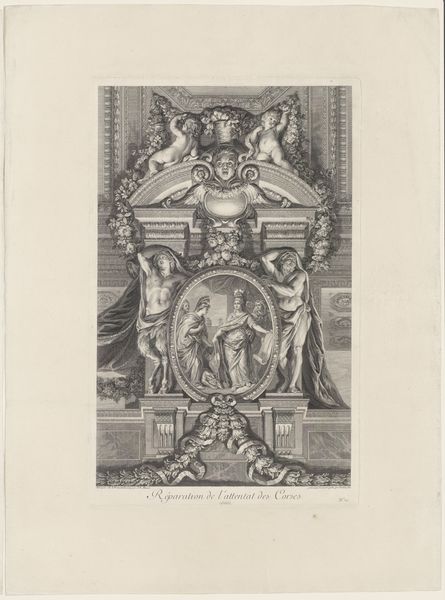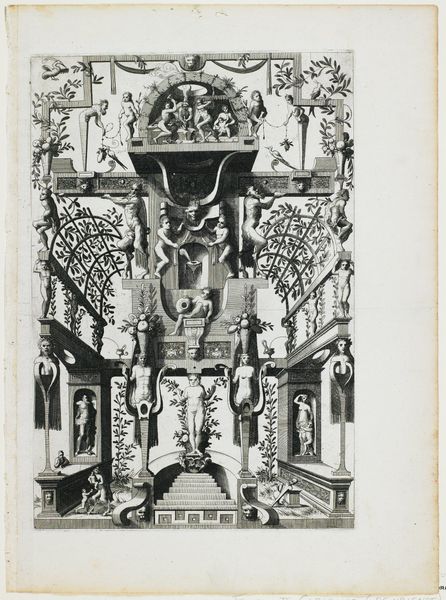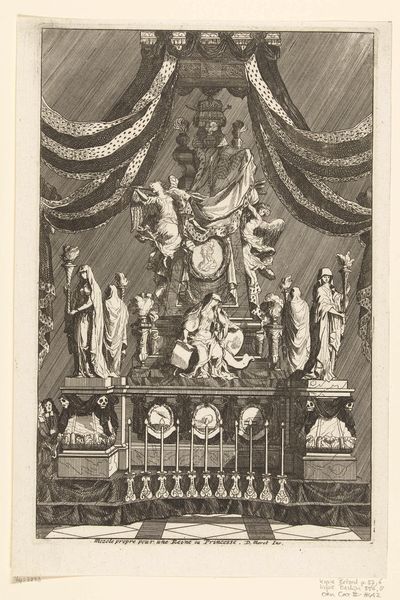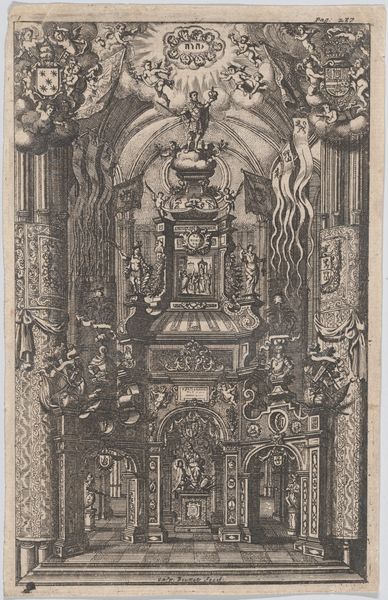
Funeral monument to Charles V, Duke of Lorraine, frontispiece to 'Les Actions glorieuses de S.A.S. Charles Duc de Lorraine' 1703 - 1704
0:00
0:00
drawing, print, engraving
#
portrait
#
drawing
#
allegory
#
baroque
# print
#
form
#
line
#
history-painting
#
engraving
Dimensions: Sheet: 11 in. × 7 7/16 in. (27.9 × 18.9 cm) Plate: 9 1/4 × 6 7/16 in. (23.5 × 16.4 cm)
Copyright: Public Domain
Curator: Here we have Sèbastien Leclerc's engraving, a funeral monument to Charles V, Duke of Lorraine, dating from around 1703-1704. Editor: My first impression is one of elaborate density! The eye struggles to find a resting point amid the profusion of symbols and figures. It's like a carefully constructed, if somewhat overwhelming, visual puzzle. Curator: Absolutely, and it speaks volumes about the societal context. Leclerc crafted this as the frontispiece to a book celebrating Charles V’s “glorious actions,” a clear attempt to cement his legacy and reinforce the power structures of the time. The monument itself acts as a stage for complex power dynamics. Editor: The central obelisk certainly dominates, doesn't it? And the portrait medallion of Charles V is strategically placed near the top, asserting his elevated status. Note the surrounding emblems of authority – the crossed weapons, flags, and ornate heraldry – it’s an organized system of signs relating to power. Curator: Indeed. It is also crucial to examine who is being centered in historical narratives like these. Charles V's power, of course, came at a cost – likely through the exploitation and marginalization of others. Engravings like these played a role in perpetuating dominant historical narratives and served as ideological tools. Editor: Looking at the formal aspects again, Leclerc’s mastery of line is undeniable. The way he uses hatching and cross-hatching to create depth and shadow, giving the figures volume. Also, how he organizes the elements within the architectural space is remarkable. Curator: True. It's a sophisticated propaganda piece that uses allegory to solidify the Duke's image in a very strategic way. In my view, by analyzing this image, we can shed light on both Leclerc's technique and the mechanisms of 18th-century power and the narrative it promotes. Editor: It's interesting to consider the composition as a kind of visual argument – meticulously arranged to persuade the viewer of Charles V's greatness and its relevance in the grand scheme of Baroque aesthetics. Curator: Agreed, this piece pushes us to critically evaluate how legacies are constructed and disseminated through art. It’s important to confront these narratives. Editor: It makes you appreciate the artist's skill, and at the same time, invites you to delve into the underlying visual order of it all.
Comments
No comments
Be the first to comment and join the conversation on the ultimate creative platform.
